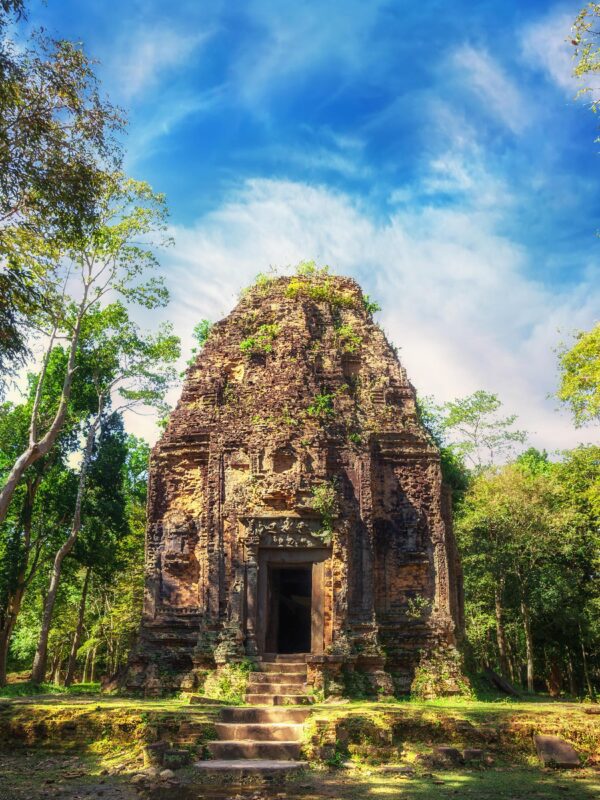After more than two and a half years of the Covid-19 pandemic, the number of national and international visitors to the pre-Angkorian Sambor Prei Kuk temple complex in Kampong Thom province has begun to increase.
At the same time, local communities are more aware of environmental issues and have largely discontinued encroaching on forests and hunting animals. They have turned to natural ecological businesses and are selling domestic products.

Tour guide Cheng Chenda told The Post that the number of visitors is steadily increasing, a sign of recovery from the Covid-19 pandemic.
“We break it down by day. On Saturdays and Sundays we have a lot of Cambodian visitors, sometimes students from Phnom Penh. We record 300 to 500 visitors a day. We generally see about 20 foreign visitors,” he said.
The figures were recorded and sent to the provincial Department of Tourism.
Chenda said the growth of visitors is giving hope to local communities.
“The visitors buy a ticket for $10 and sometimes use community services such as guides, guesthouses, homestay, bicycle hire or rides in an ox-drawn cart,” he added.
Chenda said the majority of the foreign visitors appeared to be from France and Japan. The past four months had seen 7,000 to 8,000 domestic tourists and between 700 and 800 foreign visitors.

Nhov Chhoeurn, a vendor near the temple, said she was very excited to see the visitors returning, noting that her income had increased along with their return.
“I sell locally made goods to the tourists. Some days, I earn up to 50,000 riel [$12.50],” she said.
Chhoeurn added that her family had previously hunted animals, but since the temple complex was put on the World Heritage List, they had raised animals, grown rice and sold cakes.
“We now raise cattle and farm rice. In our free time, we sell cashew nuts. Compared to the old days, we are better off,” she said.
Ministry of Environment spokesman Neth Pheaktra said the government’s policy is to create local economies which would profit from the preservation of the Kingdom’s natural resources.
He added that rural Cambodia has a lot of tourist potential but lacks the knowledge to realise it. The ministry is now supporting local communities and introducing tourism training.
“We have met with the communities which we believe have the most tourism potential. They are optimistic about our plans and we encourage them to capitalise on the potential of tourism to generate income,” he said.

Pheaktra continued that the creation of choices for tourism-based communities – in terms of economic development plans, animal raising and cash crop planting – is part of assisting them with their family’s economic wellbeing towards eliminating forest crimes.
Chhith Sam Ath, manager of USAID Greening Prey Lang, said the project has given support to many communities by providing $5,000 to $10,000 to each one, to finance patrols, strengthen their professional skills and help conserve ecotourism.
“We do whatever we can to turn their areas into tourist destinations which can generate income. For example, at Sambor Prei Kuk, we provided them with boats and bicycles that they could rent to tourists.
“We also provided training in food hygiene so they can serve guests better. These livelihoods are very important to reduce pressure on wild animals and the forest,” he said.
Sar Yam, head of the Reaksmey Phoum Pir Kiri Boeung Kranhak tourist community, said that before 2000 the community had felled trees and hunted animals to make a living. After various organisations explained the importance of preserving natural resources to them, they began growing rice and serving tourists.
“We have introduced services such as homestay, boat rides, bird watching tours, bicycle rides, and trekking. The community used to set traps and use home-made firearms to catch anteaters and wild boars, but we have long since stopped those practices. If there is any hunting going on, it is due to a lack of understanding,” he said.


